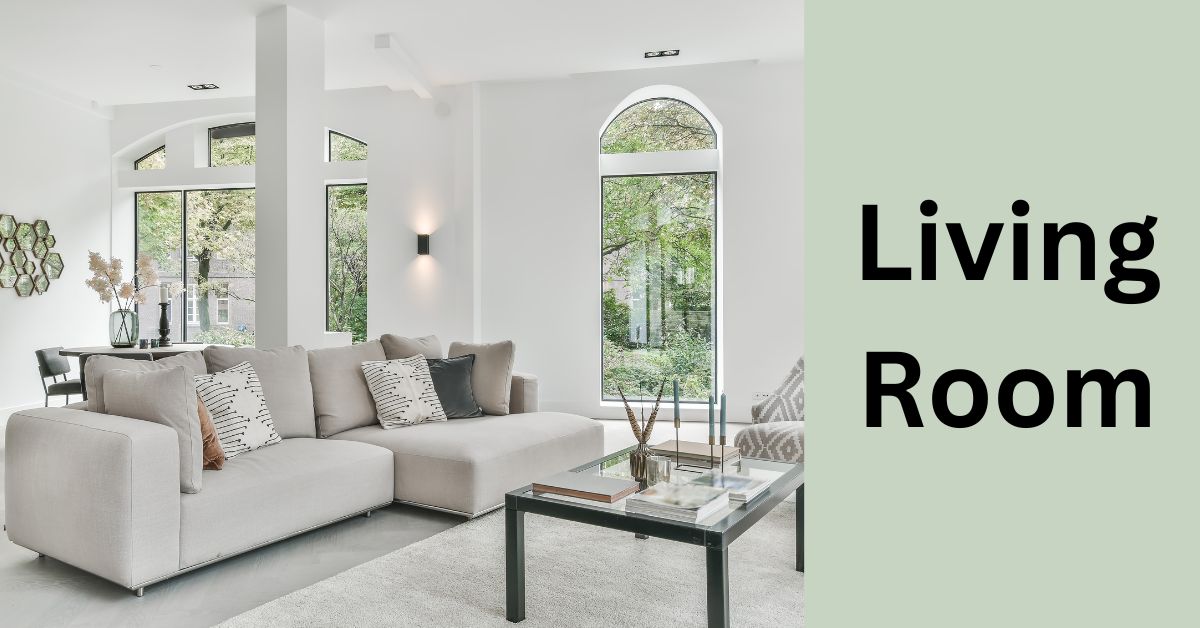Table of Contents
Note: If you came to this post about the living room through a random search, please click on this parent page and our home page for more context.
Living Room Remodel
Living room remodeling is not easy. It is hard to know where to start when laying out a living room. This is because it involves the integration of many factors.
This includes one’s lifestyle, one’s aesthetic taste, room dimensions, furniture selection and arrangement, choice, and placement of artwork, lighting, traffic flow, and more. So let’s break it all down and take it step-by-step.
Decide on The Living Room’s Purpose and Function
The living room must work for your family’s activities. So prioritize what you will be using it for. Uses might include entertaining, playing games, conversation, watching television, reading, or computer work.
None of these things are mutually exclusive but they need to be prioritized. And you must determine how many people you will accommodate.
Thinking this through will help your planning.
Measure the Space
Measure the room and reduce its dimensions to graph paper. Use a simple 1:1 scale. This means that one foot of the floor plan becomes one inch on paper.
You can make rough-scale paper cutouts to represent pieces of furniture. Color them. This will give you a visual of what will fit and where it should go.
Decide on a Focal Point/Fireplace
Your own lifestyle preferences and aesthetics and whether or not there is a fireplace will determine the focal point. If there is a fireplace, it will usually (but not necessarily) become the focal point by default This is the “hearth is the heart of the home” principle.
If you do not have a fireplace, we highly recommend that you find a way of including one. Elsewhere on this site, we show some inexpensive and creative ways to do this
- Related post: Fireplaces
However, you could equally make the focal point out of a television, a window view, or a piece of artwork.
If the focal point is a television, be careful that its placement is not affected by reflections from a window.
Movement and Circulation
The placement of furniture will be influenced by how people can move easily into or through the living room. For example, the living room may be a standalone room or it may be part of a great room that includes a kitchen and dining area. And you may need access to a patio.
Allow a 3 feet-wide walkway for the main through route and at least 2 feet for other movements.
The placement of furniture will be influenced by how people can move easily into or through the living room. For example, the living room may be a standalone room or it may be part of a great room that includes a kitchen and dining area. And you may need access to a patio.
Allow a 3 feet-wide walkway for the main through route and at least 2 feet for other movements.
Storage
Storage is always in short supply. So be sure to incorporate this in your planning for the living room.
Cabinets, including bookcases, should go against the walls, where there is space. Consider furniture pieces, such as a coffee table, that could include storage.
Principal Seating & the Focal Point
Place the largest furniture items first. The main couch, sectional, or sofa should face the wall containing the focal point. If the focal point is a television, the best viewing distance is 8 to 12 feet and with a viewing angle of 30 degrees.
Conversational Areas
Sofas and chairs should be placed facing each other or angled towards each other for easy conversation. If the room is large enough, create multiple conversation areas. Each conservation area should be defined by its own area rug.
Place Tables & Cabinets
The coffee table goes in front of the main couch or sectional. Allow 18 inches between the seat and the table. The bigger the coffee table the better.
The coffee table can become its own mini focal point and have room to display conversation-inspiring accessories. “Coffee table books” are a thing.
Side tables go next to armchairs. A sofa table (long and narrow) goes behind the sofa or sectional. Every seat should have a table surface within easy reach.
Allow at least 30 inches between furniture pieces for comfortable circulation.
Avoid pushing chairs and sofas against the wall. They should float away from the wall.
Plan for Lighting
Observe the rules for layering ambient lighting, task lighting, and accent lighting. We discuss this elsewhere on the site.
- Related post: Interior Lighting
Area Rug
Center an area rug in the middle of the main seating area and coffee table. It should be large enough to accommodate all these furniture pieces. This provides a visual anchoring effect. Be careful to secure its edges, so it does not become a trip-and-fall hazard.
- Related post: Flooring Material
Artwork & Accents
Artwork should be in proportion to the size of the room and its furniture. If you do not have pieces that are large enough, group them in collage-type arrangements.
Use bookshelves to display accent pieces and photographs as well as books.
Using Textures & Accents
Mix and match. Juxtapose materials with different textures, including wood, metal, glass, and fabrics. Use pillows for effect and color splashes. This thought includes mixing and matching furniture styles.
Harmonize
Your decorating choices for the living room should be in harmony with the rest of your home’s decorating style. This includes the use of colors.
See elsewhere on this site for discussions on color in design, room color and mood, and design elements & principles.
- Related post: Design Elements & Principles
- Related post: Room Color and Mood
- Related post: Color in Design
- Related post: Living Room Feng Shui





Leave a Reply